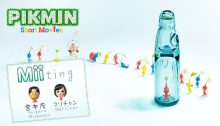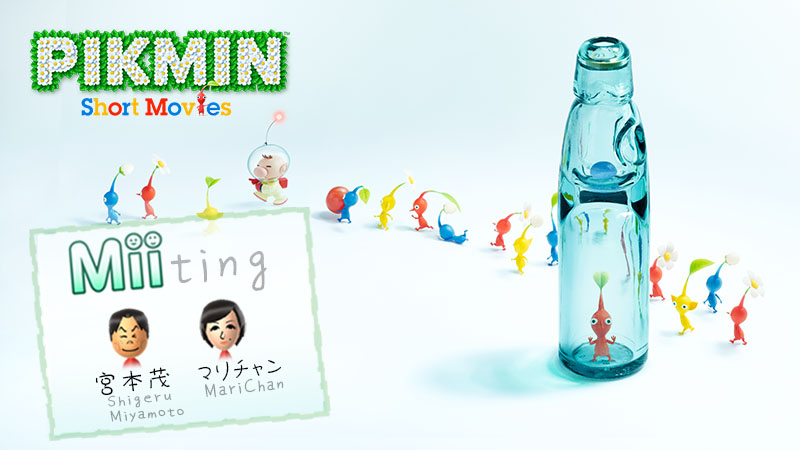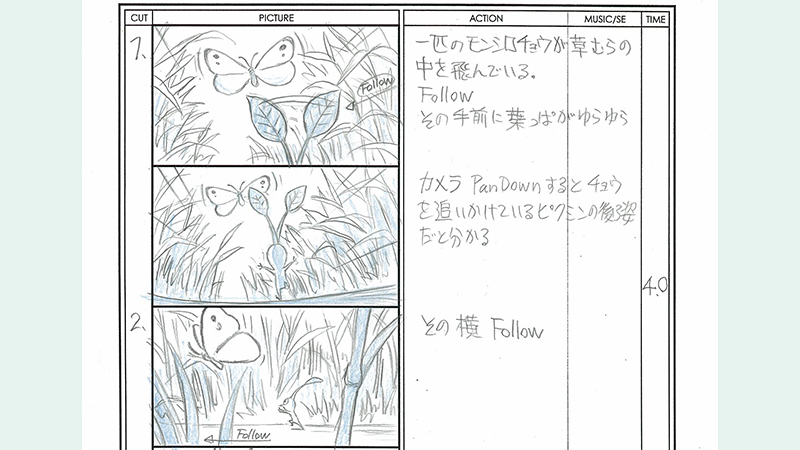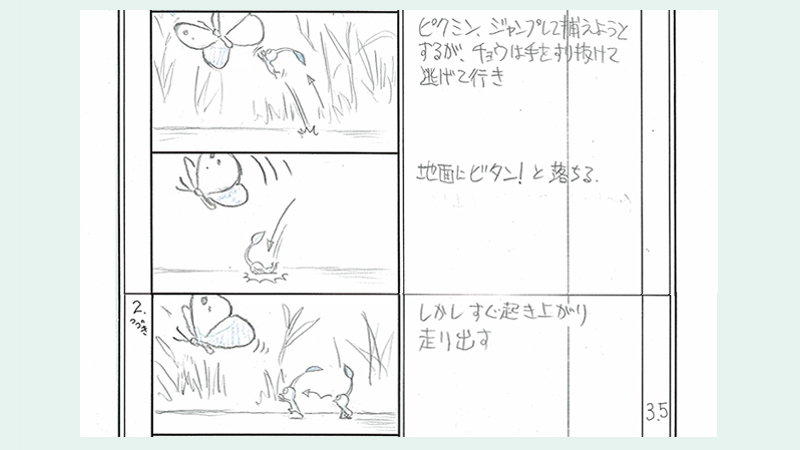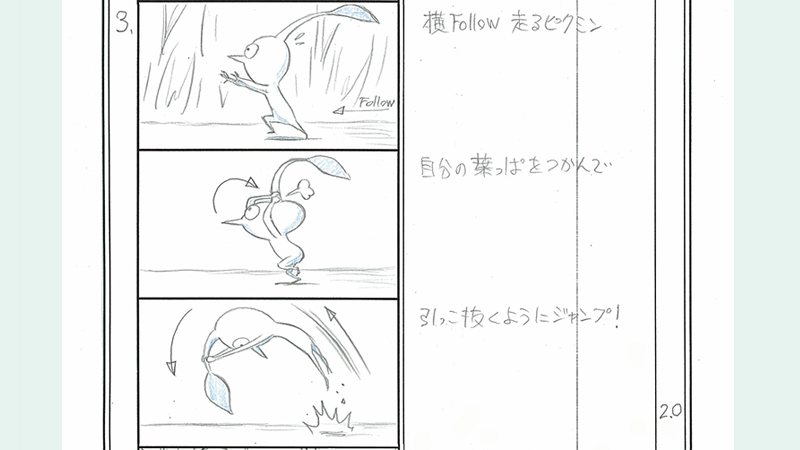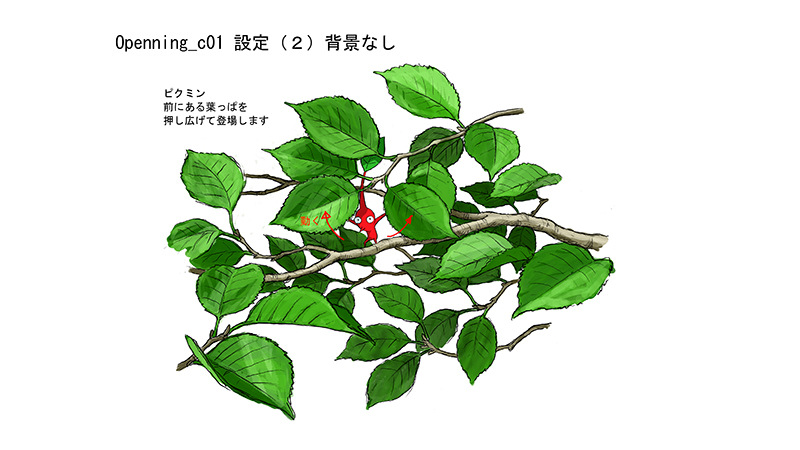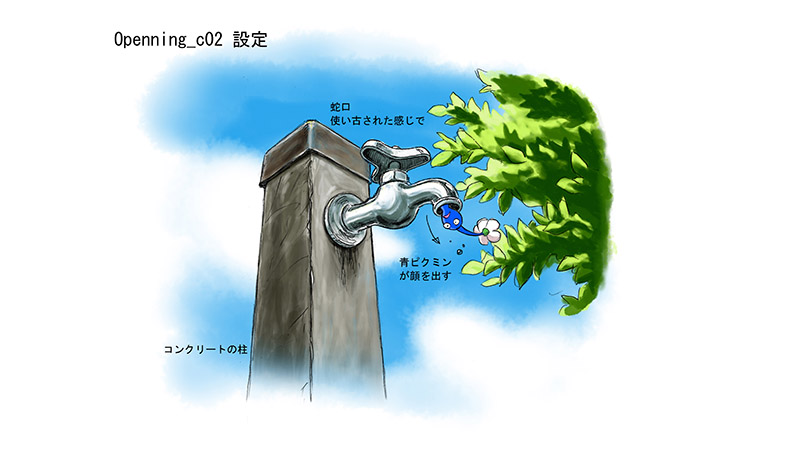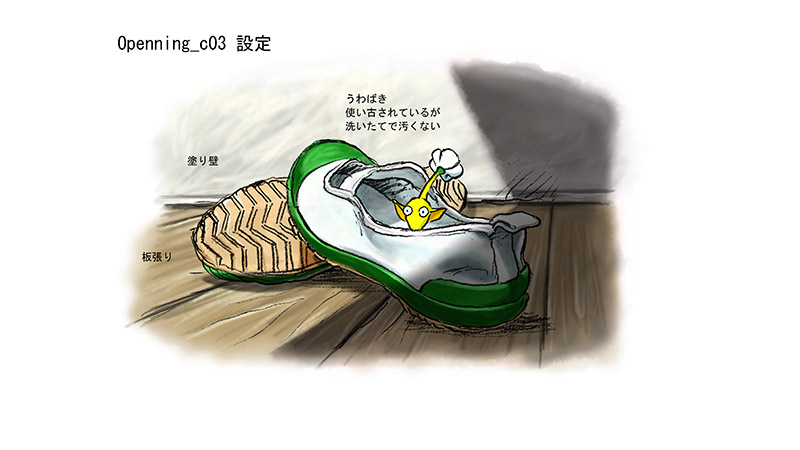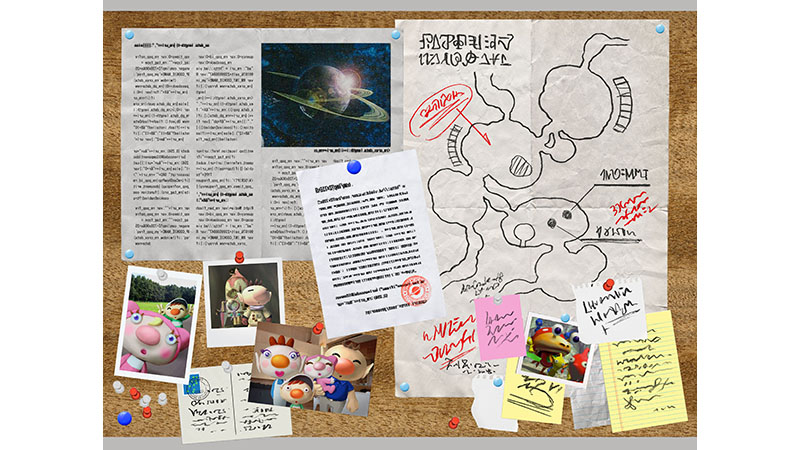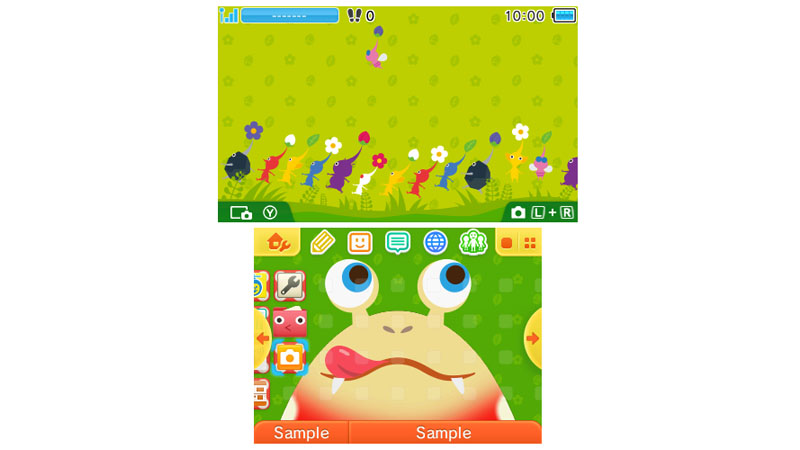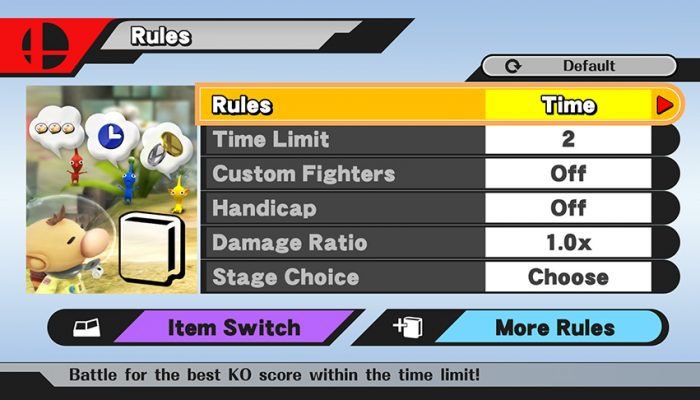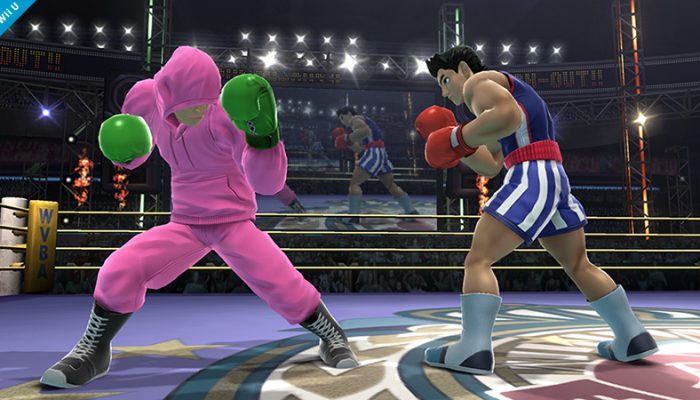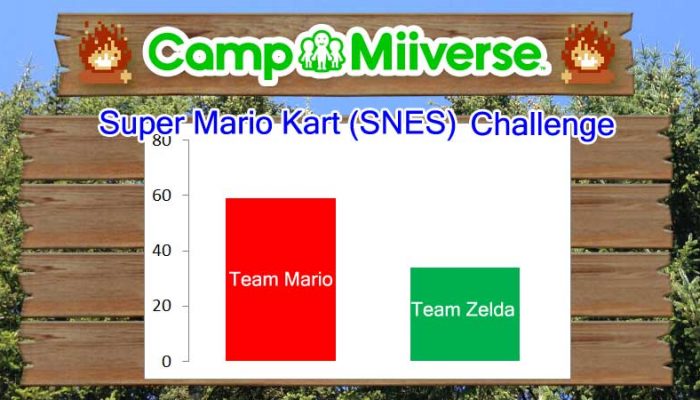 MariChan: “Do you mind if I give away a little secret?” Miyamoto: “Well, so long as you don’t spoil the story…”
MariChan: “Do you mind if I give away a little secret?” Miyamoto: “Well, so long as you don’t spoil the story…”
☆ NintendObs Weekly – Monday, November 17, 2014 – Sunday, November 23, 2014.
★ NintendObs Daily – Monday, August 10, 2020.
MariChan:
Welcome to the Miiting! I’m MariChan, and I’ll be your host for this interview!
Firstly I’d like to thank you all for being here, so thank you! Our guest is the creator of Mario and Pikmin, and the maker of PIKMIN Short Movies, which has just been released on Nintendo eShop. Let me introduce Shigeru Miyamoto! Or how about we call him the Pikmin way? Fweeeeeet!
Miyamoto:
Hello, everyone. I certainly wasn’t expecting to be summoned by a whistle! This is my first experience of this kind of interview and I’m a little nervous, so please be gentle!
MariChan:
First, let me congratulate you on your special showing of the PIKMIN Short Movies at the Tokyo International Film Festival!
Miyamoto:
Thank you! It was incredible to be able to screen my films at such a prestigious event.
MariChan:
I got the opportunity to watch them as well, and the 20 minutes seemed to pass in the blink of an eye. During the game I didn’t really have the chance to think of the Pikmin as individuals, but I suppose that really, each one must have this kind of drama in their lives.
Miyamoto:
Actually, the Pikmin in the game move in a way that is every bit as individual as those in the movies, it’s just that you can’t control them directly, only lead them. And because they’re so small, and there are so many of them, it’s hard to tell what each individual is doing. That is why I wanted to create these Short Movies that focused only on the Pikmin. What did you think of them, by the way?
MariChan:
This might come across as a little rude, but I liked them more than I expected to! Personally, I’m not a big fan of cute characters, but they reminded me of the Pikmin from the games, and made me think about what they were like in their everyday lives. It gave me a sense of affinity with them, and actually made me feel sort of protective of them, too.
Miyamoto:
Well, now I’m interested to know what you were expecting! But the concept of “affinity” was something I really wanted to communicate, so I’m very happy to hear you say that. When I was working on the games, I found this feeling of affinity to build up quite naturally, and even in my normal life I was thinking, “I wonder what would happen if there were Pikmin here?” or “I wonder what this would look like from the point of view of a Pikmin?” Those little ideas became doodles, and that was the beginning of the PIKMIN Short Movies.
MariChan:
I can’t even imagine how you would go from a doodle to a full animation!
Miyamoto:
Well naturally, the animation wasn’t produced directly from my doodles, but they served as a basis from which the production staff created storyboards. And since we’re on the topic, I’d like to show you a little glimpse of them today.
This is the storyboard of the beginning of the second movie, Treasure in a Bottle. One…
Two…
Three. Can you see it?
MariChan:
Oh, very professional!
Miyamoto:
It should be! It was drawn by a professional! Using this storyboard as a starting point, we coloured every scene to make the images clear, and many fine adjustments were made. These next examples are from different scenes, but they give you an idea.
Ouverture ①
Ouverture ②
Ouverture ③
MariChan:
Aha! I see the notes say that those slippers are old but clean – I did actually wonder if they smelt bad. That’s one mystery solved!
Miyamoto:
Oh, and take a look at this.
MariChan:
I don’t remember that appearing anywhere…?
Miyamoto:
This is a noticeboard that hangs on the wall in Olimar’s room in the first movie. There’s no close-up shot of it, but we went to a lot of trouble even on stuff like this that you don’t really see. When I’m watching a film, the moment there’s something that doesn’t seem real, or an element that seems at odds with the feel of that fictional world, I’m dragged right back to reality. So when making these short movies we put a lot of care and attention into creating the surroundings.
MariChan:
All that attention to detail is no doubt the reason it’s so easy to get attached to the Pikmin, even in a 20-minute short film. From what I’ve heard, making animations is very hard work. Which would you say is easiest, out of game production and movie production?
Miyamoto:
Game production, I think! But it’s not really that game production is easier, it’s more that movies and games are so fundamentally different that the areas where you must focus your energy are also completely different. For that reason, the easier process to me is the one I’m the most used to, which is game production.
MariChan:
It would be easy to assume that games and animations are quite similar, but I guess that’s not the case.
Miyamoto:
Put simply, the difference is that with animations and other such visual media the consumer is a viewer, whereas in games the consumer is a player, so they are created from two different mindsets. Being able to make games is no guarantee you’d be any good at making animations, and vice versa. This is another thing the experience of making these movies has taught me!
MariChan:
One thing that struck me about the movies was the sound, which is very distinctive. Did you need to take a different approach to the sound for the movies than when you’re creating sound for a game?
Miyamoto:
This probably overlaps with what I just said, but games are created for people to play, and if a game is outside the range of the player’s expectations, it creates a kind of wall or a distance between them and the game world. In a film, every frame must be constructed to communicate something to the viewers, and to achieve this purpose, scenes are sometimes intentionally exaggerated or even made absurd.
MariChan:
For sure, there were times where I was like, ‘Huh? Is that the sound of a railway crossing?’ and so on, but nothing felt strange or out of place. Was it your idea to use sounds like that?
Miyamoto:
I worked together with the sound directors from the PIKMIN games to create the sound. For the background music and so on, we have a library from the three PIKMIN games, so I listened to all of that for the first time in a long time.
MariChan:
It might be fun to listen and see if you can pick out what sounds are used where! Actually, that reminds me of something – do you mind if I give away a little secret?
Miyamoto:
Well, so long as you don’t spoil the story…
MariChan:
It’s about the version of the movies for Nintendo 3DS. If you press the A Button or other buttons while watching the movies, you can hear various sounds, right?
Miyamoto:
Ahaha, well spotted! Of course I used what I considered to be the right sound for the job in the movies, but I thought I’d add a tiny bit of interactivity here for the viewer!
MariChan:
Triggering the sounds I liked at the timing I wanted to was more fun than I would have thought!
Miyamoto:
This hidden feature is only available on the Nintendo 3DS version, but then the Wii U version has those beautiful big-screen visuals, so I don’t think you’re losing out, whichever one you pick!
MariChan:
Right – the content is the same, but on Nintendo 3DS you can view the movies in 3D, whereas on Wii U you can watch them in HD, so I guess watching them on both platforms would really make you see the good points of each.
Well, we’ve been talking for a while now, so I think now is a good time to finish up this interview. Do you have any last words before we sign off?
Miyamoto:
Now I feel like I’m writing my will or something! Anyway… For a long time I’ve been of the opinion that if a game world is in sync with your personal experiences, it will be more fun to play. By seeing the movies and playing the game like you have, MariChan, I think you can get a deeper level of enjoyment out of the game. For that reason, we’ve created a demo of PIKMIN 3! The game now has new control options that make it easier to play, so please enjoy the movies and the game together!
MariChan:
It’s true – since I watched the movies, I find that I dread losing even a single Pikmin. It’s really made me tighten up my approach to playing the game! I’d say that’s a feeling unique to Pikmin that you don’t often get with something like Mario or Zelda.
Miyamoto:
There is probably a bit of a learning curve when getting to grips with Pikmin games, but if you watch the PIKMIN Short Movies and play through the demo I think it’ll all start falling into place.
MariChan:
Thank you very much for your time, Mr Miyamoto!
Miyamoto:
Thank you too! Oh, one last thing. If you want more Pikmin in your life, we’ve created a Pikmin theme for the Nintendo 3DS system! It’ll be available from next week in the Theme Shop. We’ll let you know as soon as it’s ready.
MariChan:
Having Pikmin on your HOME Menu would definitely be a step towards a Pikmin-themed life. Is there anything else you want to say?
Miyamoto:
That’s everything I can think of. I hope everyone continues to enjoy Pikmin!
MariChan:
Then let’s wrap up this Miiting. Thanks for being patient, everybody! And now…dismissed! Fweeeeeet!
— マリチャン (NNID: NintendoMchannel)
Source: Miiverse.
At NintendObserver, the comments are on Discord.
Click on Community to learn more. 🙂
…
…Wanna play? Buy a Wii U.
And if you’ve already got yours, click on Pikmin 3 for everything you need to know about the game. 😀
